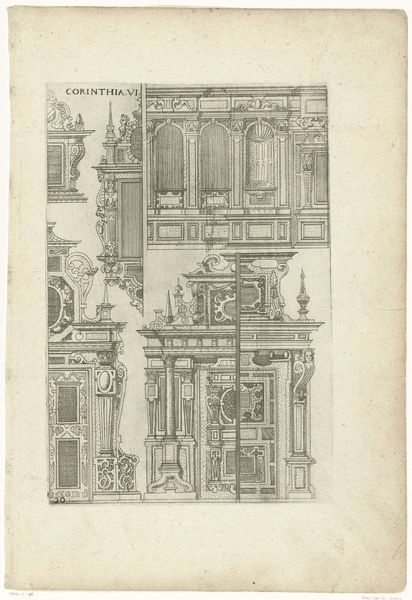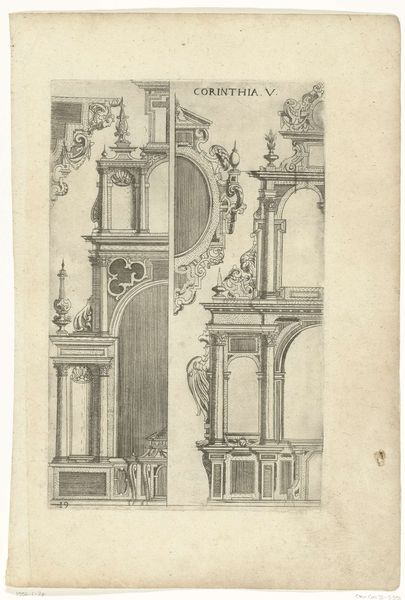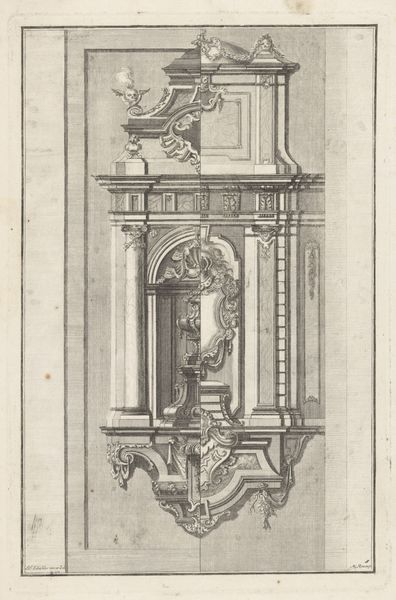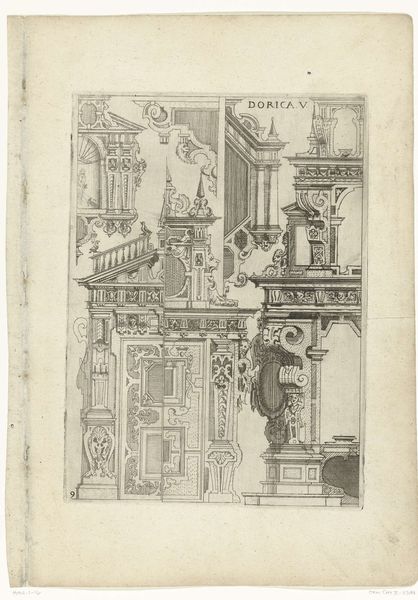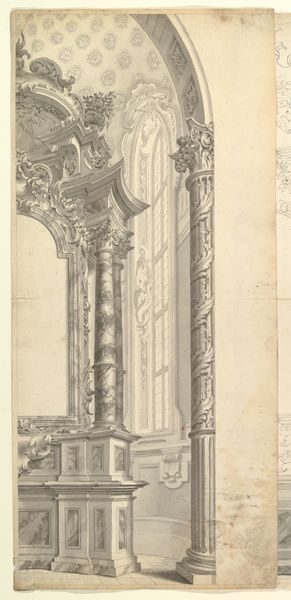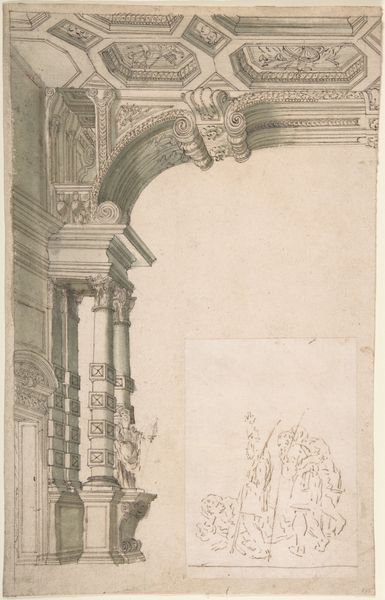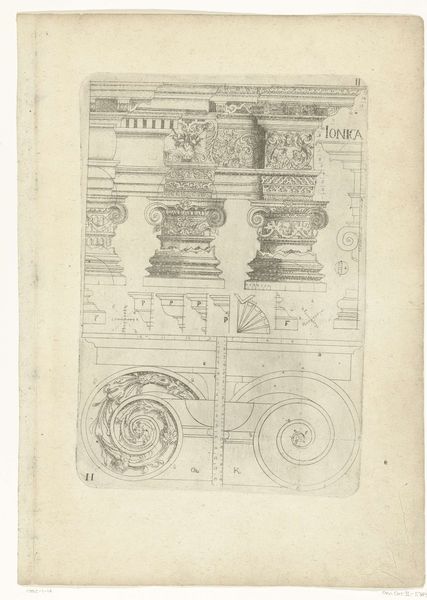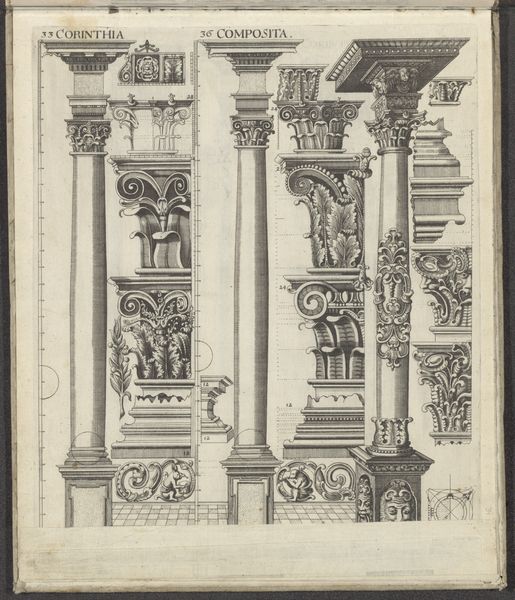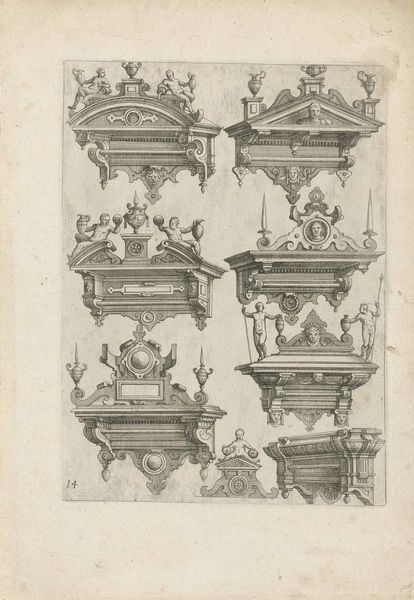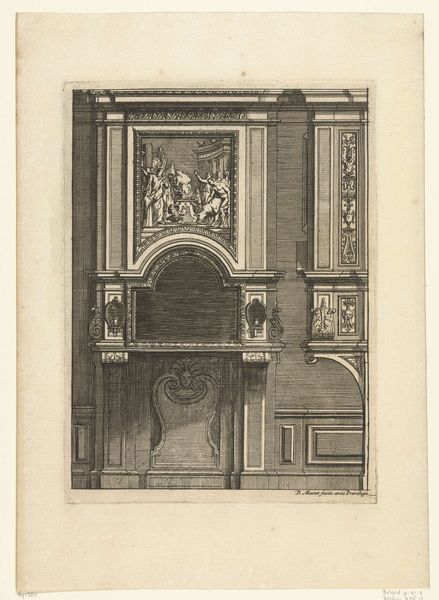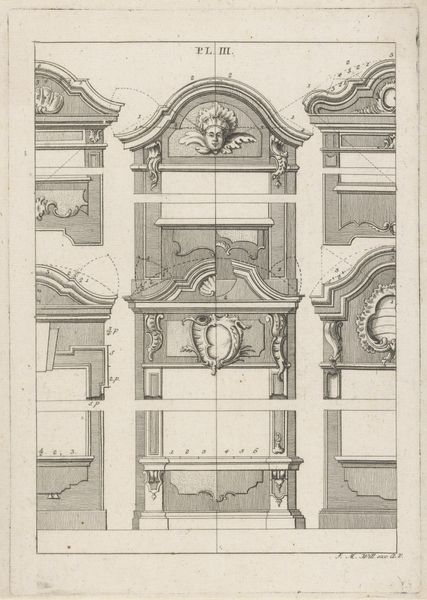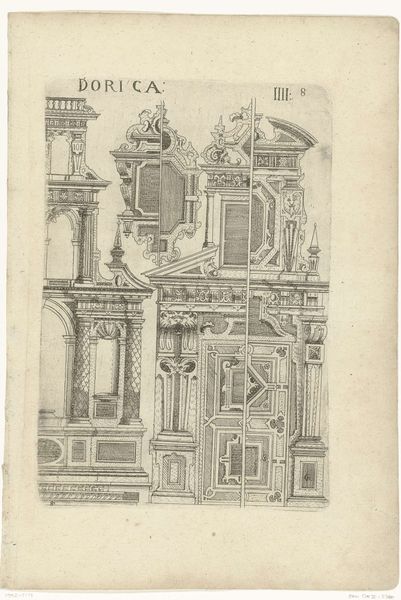
drawing, print, engraving, architecture
#
drawing
# print
#
form
#
11_renaissance
#
geometric
#
line
#
engraving
#
architecture
Dimensions: height 280 mm, width 186 mm
Copyright: Rijks Museum: Open Domain
Curator: This delicate engraving, entitled "Zeven halve portalen," or "Seven Half Portals," dates back to 1610 and is attributed to Gabriel Kramer. What strikes you most upon viewing it? Editor: The sheer density of line work. It's overwhelming but also intriguing; I want to get up close to examine the engraver’s mark. What’s especially captivating is how the architectural details seem to emerge from the surface, as if slowly taking shape before us. Curator: Indeed. Observe how Kramer uses the contrast between light and shadow, created through varied line density, to define form and depth. Each "portal," although incomplete, demonstrates a deep understanding of classical architectural principles. It’s all about proportion, balance, and the considered arrangement of forms. Editor: It’s not just about those architectural forms; it's the repetitive labor etched in the plates, the way Kramer seems to build and present variations with meticulous lines. Did these serve any real practical purpose beyond presenting craftsmanship? Were they blueprints for an actual team of laborers to follow, a vision set by someone distanced from the heavy lifting of the construction? Curator: A pertinent point. Although presented as discrete images, the portals share similar ornamental motifs, thus indicating perhaps a unified system, and perhaps a subtle commentary on ideal architecture. Editor: Ideal, yet unbuildable. Consider that Kramer has represented each portal cut in half. They remain drawings, plans—a vision ungrounded and perhaps critiquing excess and opulence through presentation as simple visual object on the page. What about the labor involved in building compared with the labor involved in production of the engraving itself? There are economic and societal divides at play, represented in a series of careful choices, through print, production, circulation. Curator: Certainly. The print, therefore, functions as both object and dissemination, furthering the language of classicism. These are templates, aren’t they? Ideas circulated to pattern and design. Editor: Templates they may be, but they stand, quite deliberately, as singular and discrete images within a historical, and economic, conversation. It is a dialogue about craft that acknowledges its own constructed space, its role as both a physical and artistic production. Curator: This engagement with form and process leads us to new dialogues on the boundaries of artmaking and intellectual work of art as an image, idea and template for its time. Editor: Precisely. By scrutinizing Kramer's engraving, we uncover layers of conceptual framework, craftsmanship and meaning.
Comments
No comments
Be the first to comment and join the conversation on the ultimate creative platform.
